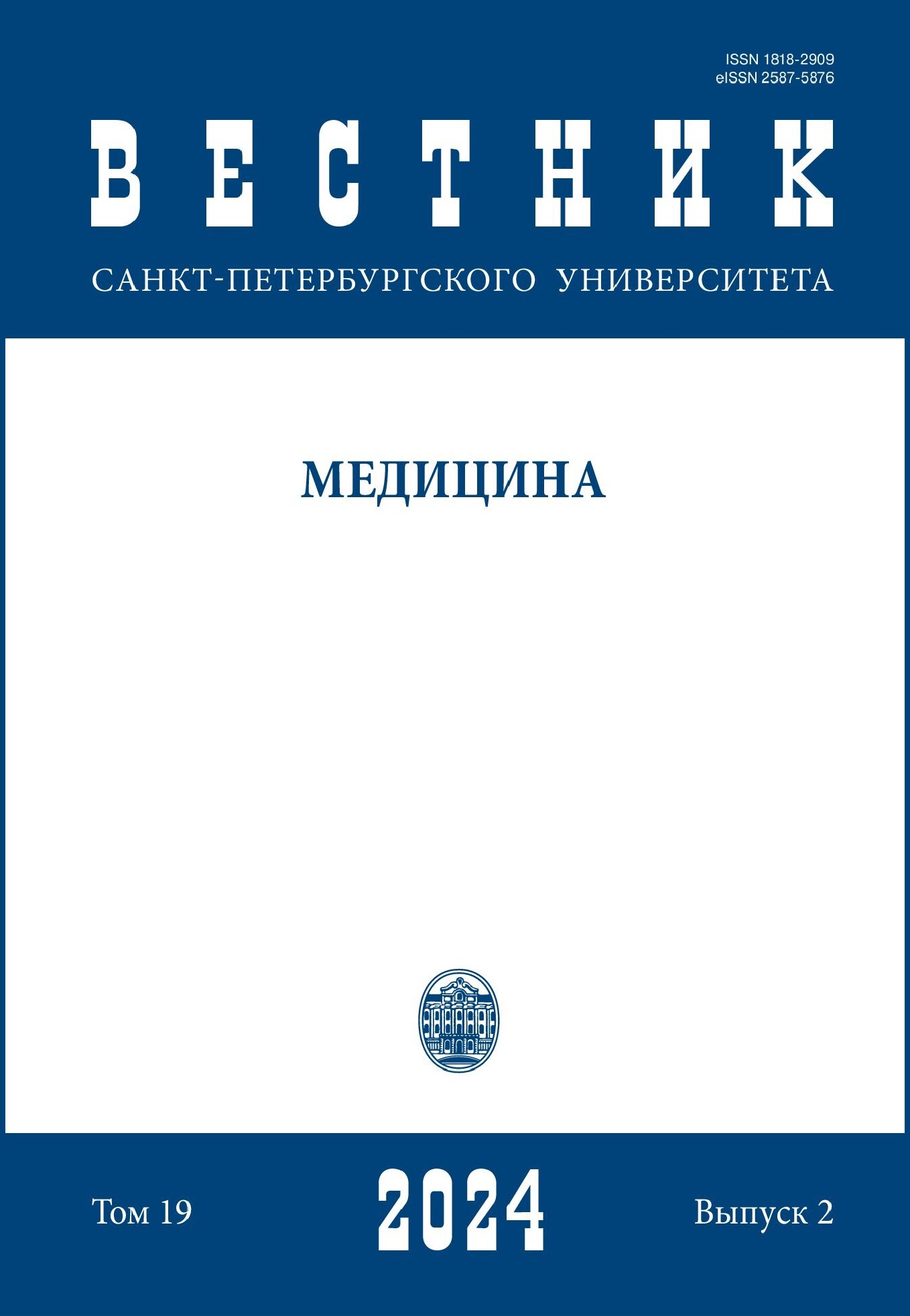Etiological structure, clinical and epidemiological characteristics of bloodstream infections caused by resistant microorganisms among COVID-19 patients
DOI:
https://doi.org/10.21638/spbu11.2024.205Abstract
Infectious diseases caused by resistant pathogens are a serious public health problem. Generalized
forms of resistant infections involving the vascular system in the pathological process are often associated with the irrational use of antimicrobial drugs. The pandemic of a new coronavirus infection (COVID-19) was a significant factor that determined further negative trends in the development of antibiotic resistance. The aim of the study was to investigate the spectrum of microorganisms and analyze clinical and epidemiological data in patients with COVID-19 and bloodstream infections caused by resistant bacterial pathogens in the first 10 months of the pandemic. It has been shown that resistant gram-negative microorganisms are the leading etiological cause of bloodstream infections among hospitalized patients. A. baumannii, as a mono-etiological agent or as part of microbial associations, is the predominant causative pathogen of generalized infections in COVID-19 patients. A high level of comorbidity according to the Charlson index and previous courses of antibiotic therapy can be regarded as potential out-hospital predictors of contamination by resistant pathogens. The severe course of the COVID-19 including of the phenomenon of immunosuppression and the occurrence of sepsis determine the high level of hospital mortality. The addition of generalized infections is an extremely unfavorable factor that worsens the prognosis for recovery.
Keywords:
new coronavirus infection, bloodstream infection, Charlson index, Pitt and quick Pitt bacteremia score
Downloads
References
References
Downloads
Published
How to Cite
Issue
Section
License
Articles of "Vestnik of Saint Petersburg University. Medicine" are open access distributed under the terms of the License Agreement with Saint Petersburg State University, which permits to the authors unrestricted distribution and self-archiving free of charge.




